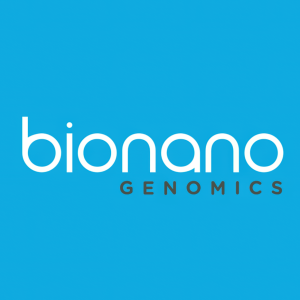Bionano Announces Publication of a Breast Cancer Study Showing that the Number of SVs Detected with OGM May Be Related to Prognosis, Tumor Progression and Chemotherapy Resistance
SAN DIEGO, March 19, 2024 (GLOBE NEWSWIRE) -- Bionano Genomics, Inc. (Nasdaq: BNGO) today announced the publication of a study of optical genome mapping (OGM) in hereditary breast and ovarian cancer (HBOC) syndrome showing that when tumors exhibited higher overall numbers of structural variations (SVs) they tended to have more mutated genes and altered signaling pathways, which may correlate with poor prognosis, tumor progression and chemotherapy resistance. Researchers also found that OGM was able to detect chromothripsis events and novel gene fusions in cancer tissues with high accuracy, including novel gene fusions that were not detected by other methods.
HBOC syndrome is estimated to cause 5
Study authors categorized the HBOC-related breast cancer samples into two groups, SVhigh and SVlow, based on the number of SVs detected by OGM, high or low Ki-67 expression, and the number of mutated genes and altered signaling pathways. The authors noted that SVhigh samples were associated with higher Ki-67 expression and higher homologous recombination deficiency (HRD) scores, indicating that genetic alterations may have potential predictive and therapeutic significance. The SVhigh samples also showed higher numbers of chromothripsis events and novel gene fusions than the SVlow samples. Eight novel gene fusions were identified by OGM, including three that had not previously been detected by other methods of analysis. These gene fusions may be involved in drug resistance and tumor development.
“We are pleased to see the publication of this study, which highlights OGM as a promising tool for detecting novel variants in HBOC-related breast cancer that have oncogenic potential. We believe the comprehensive assessment of the role SVs play in breast cancers with abnormal DNA repair functions might expand our current understanding of disease progression and precision medicine in breast cancer," commented Erik Holmlin, PhD, president and chief executive officer of Bionano.
The paper is available at: https://www.imrpress.com/journal/FBL/29/1/10.31083/j.fbl2901002/htm
About Bionano
Bionano is a provider of genome analysis solutions that can enable researchers and clinicians to reveal answers to challenging questions in biology and medicine. The Company’s mission is to transform the way the world sees the genome through OGM solutions, diagnostic services and software. The Company offers OGM solutions for applications across basic, translational and clinical research. Through its Lineagen, Inc. d/b/a Bionano Laboratories business, the Company also provides diagnostic testing for patients with clinical presentations consistent with autism spectrum disorder and other neurodevelopmental disabilities. The Company also offers an industry-leading, platform-agnostic software solution, which integrates next-generation sequencing and microarray data designed to provide analysis, visualization, interpretation and reporting of copy number variants, single-nucleotide variants and absence of heterozygosity across the genome in one consolidated view. The Company additionally offers nucleic acid extraction and purification solutions using proprietary isotachophoresis (ITP) technology. For more information, visit www.bionano.com, www.bionanolaboratories.com or www.purigenbio.com.
Bionano’s OGM products are for research use only and not for use in diagnostic procedures.
Forward-Looking Statements of Bionano
This press release contains forward-looking statements within the meaning of the Private Securities Litigation Reform Act of 1995. Words such as “believe,” “may,” “potential” and similar expressions (as well as other words or expressions referencing future events, conditions or circumstances) convey uncertainty of future events or outcomes and are intended to identify these forward-looking statements. Forward-looking statements include statements regarding our intentions, beliefs, projections, outlook, analyses or current expectations concerning, among other things: the ability and utility of OGM to detect SVs in samples suspected of HBOC syndrome; and the ability and utility of OGM to detect chromothripsis events and novel gene fusions in cancer tissues with high accuracy, including novel gene fusions that were not detected by other methods. Each of these forward-looking statements involves risks and uncertainties. Actual results or developments may differ materially from those projected or implied in these forward-looking statements. Factors that may cause such a difference include the risks and uncertainties associated with: the impact of geopolitical and macroeconomic developments, such as recent and potential future bank failures, supply chain disruptions, global pandemics, inflation and the ongoing conflicts between Ukraine and Russia and Israel and Hamas, on our business and the global economy; general market conditions; the failure of OGM to detect SVs in samples suspected of HBOC syndrome; the failure of OGM to detect chromothripsis events and novel gene fusions in cancer tissues with high accuracy, including novel gene fusions that were not detected by other methods; study results that differ or contradict the results reported in the study referenced in this press release; changes in the competitive landscape and the introduction of competitive technologies or improvements to existing technologies; changes in our strategic and commercial plans; our need and ability to obtain sufficient financing to fund our strategic plans and commercialization efforts, our ability to effectively manage our uses of cash, and our ability to continue as a “going concern”; the ability of medical and research institutions to obtain funding to support adoption or continued use of our technologies; and the risks and uncertainties associated with our business and financial condition in general, including the risks and uncertainties described in our filings with the Securities and Exchange Commission, including, without limitation, our Annual Report on Form 10-K for the year ended December 31, 2023 and in other filings subsequently made by us with the Securities and Exchange Commission. All forward-looking statements contained in this press release speak only as of the date on which they were made and are based on management’s assumptions and estimates as of such date. We do not undertake any obligation to publicly update any forward-looking statements, whether as a result of the receipt of new information, the occurrence of future events or otherwise.
CONTACTS
Company Contact:
Erik Holmlin, CEO
Bionano Genomics, Inc.
+1 (858) 888-7610
eholmlin@bionano.com
Investor Relations:
David Holmes
Gilmartin Group
+1 (858) 888-7625
IR@bionano.com








